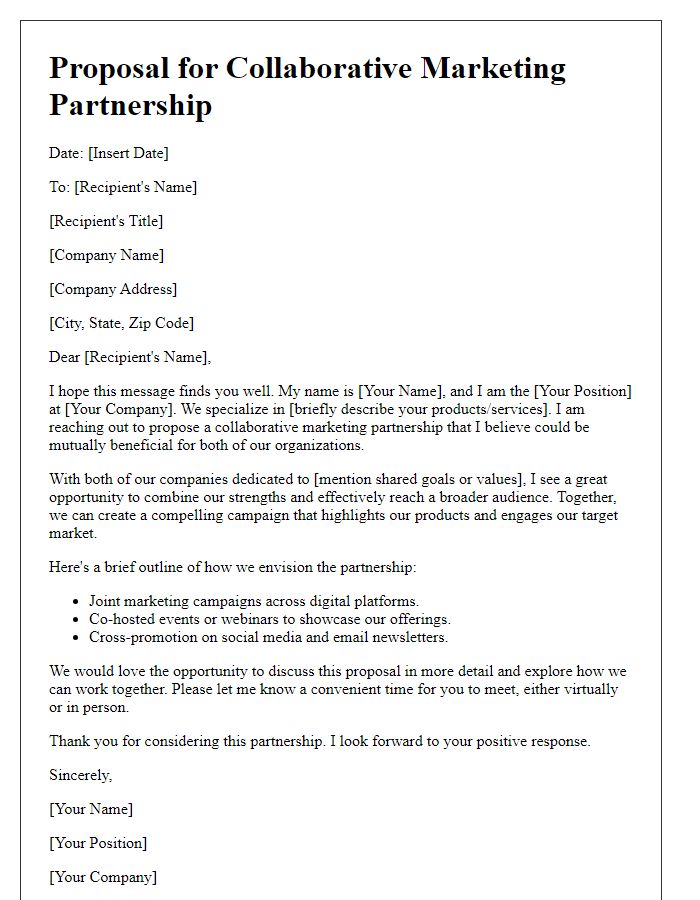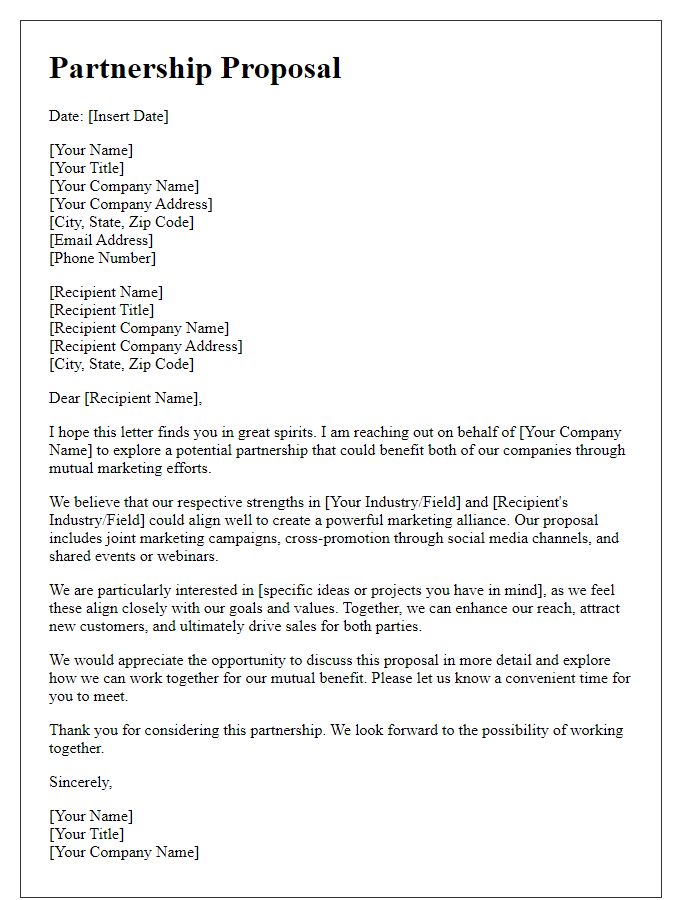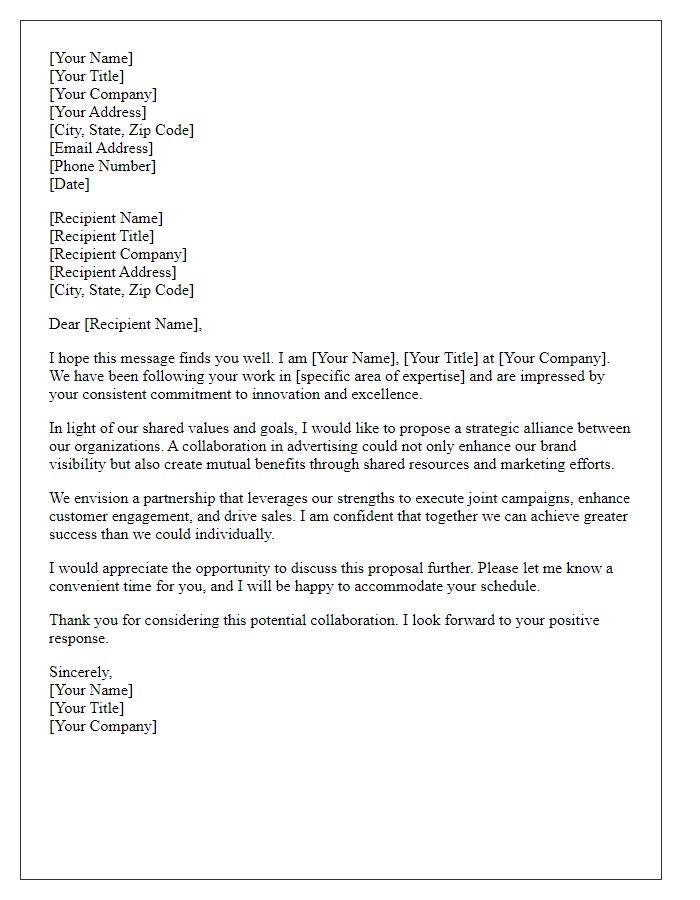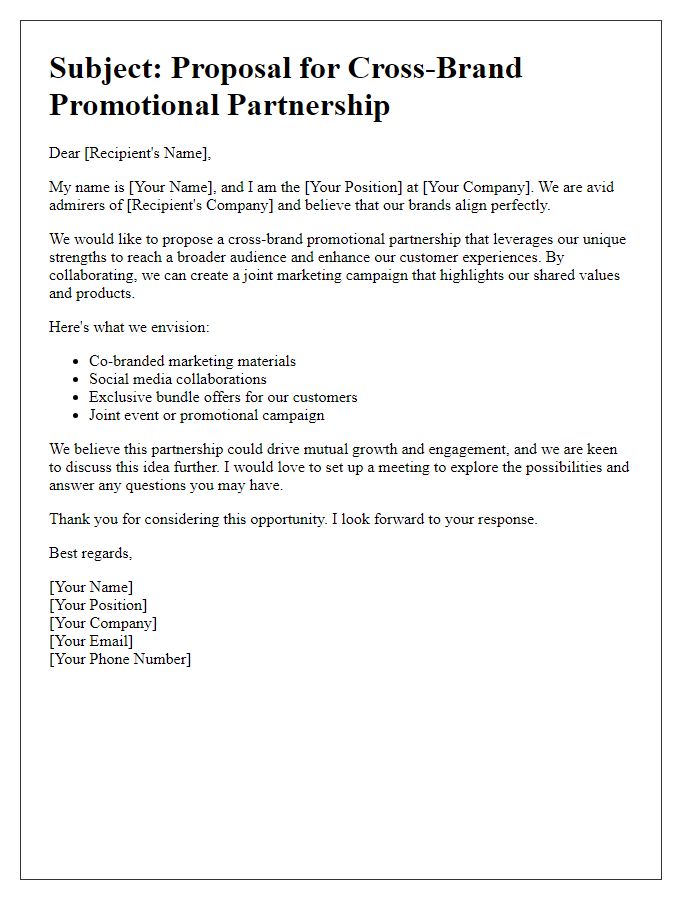Are you looking to expand your reach and engage with a wider audience? A cross-promotion partnership can be a fantastic way to leverage each other's strengths and create a win-win situation. By collaborating, we can tap into new markets, share resources, and maximize our marketing efforts together. If you're interested in discovering how we can work together for mutual growth, read on to see our proposal!

Introduction and Purpose
A cross-promotion partnership between two brands can leverage synergistic marketing efforts to enhance brand visibility and increase customer engagement. This collaboration allows both companies to access each other's customer bases, amplifying reach and fostering brand loyalty. Identifying mutually beneficial goals, such as joint social media campaigns or co-branded events, can create opportunities for shared growth and innovation. Aligning target audiences strengthens the partnership, establishing a cohesive strategy tailored to attract and retain customers effectively. In today's competitive marketplace, such partnerships are critical for expanding market presence and driving revenue growth.
Mutual Benefits and Objectives
A cross-promotion partnership presents significant opportunities for both entities involved, driving brand exposure and increasing customer engagement through shared networks. Collaborative marketing efforts can enhance visibility, enabling access to each partner's customer base and utilizing resources effectively for promotional campaigns. For example, co-branded social media posts and joint email marketing initiatives can boost engagement rates by up to 25%. Additionally, hosting events together can foster community ties, provide unique experiences to customers, and elevate brand positioning within the market. Achieving common goals such as increased sales, expanded reach, and enhanced brand reputation creates a win-win scenario that drives success for all parties involved.
Proposed Cross-Promotion Strategy
A proposed cross-promotion strategy can significantly enhance brand visibility and engagement between businesses. This approach involves two or more companies collaboratively marketing each other's products or services to access new customer segments. For example, a fitness apparel brand and a local gym could leverage each other's social media platforms, email newsletters, and in-store promotions to reach targeted audiences. Through shared campaigns, both parties may experience increased website traffic, greater social media interaction, and expanded customer bases. Establishing clear goals, such as a 20% increase in follower count or a 15% boost in sales during the promotional period, can measure success effectively, driving long-term partnerships and sustained growth for both brands involved.
Call to Action and Next Steps
A cross-promotion partnership can significantly increase brand visibility and customer engagement for both entities involved. By leveraging each other's audiences, companies can drive traffic to websites and social media platforms. Potential metrics such as increased follower counts, engagement rates, and sales conversion percentages can be tracked through collaborative campaigns. The initial step involves reaching out via email or direct messaging to outline mutual benefits and strategic alignment. Scheduling a meeting or call can facilitate deeper discussions on campaign ideas, timelines, and desired outcomes. Establishing clear objectives and key performance indicators (KPIs) will ensure that both parties remain aligned throughout the partnership.
Contact Information and Closing Remarks
In exploring a potential cross-promotion partnership, businesses can leverage mutual strengths to enhance brand visibility. Identifying key contact information, including the names and titles of decision-makers, email addresses, and phone numbers, fosters effective communication. A structured closing statement can summarize the partnership's benefits, encouraging further dialogue. Mentioning a specific follow-up timeline emphasizes commitment, creating an expectation for engagement. Integrating clear and concise language ensures a professional tone, increasing the likelihood of a positive response. Highlighting previous successful partnerships can serve as a persuasive element, showcasing the potential for shared growth and audience expansion.
Letter Template For Proposing Cross-Promotion Partnership. Samples
Letter template of collaboration proposal for shared promotional activities.













Comments